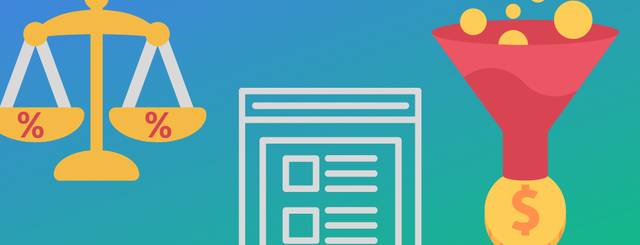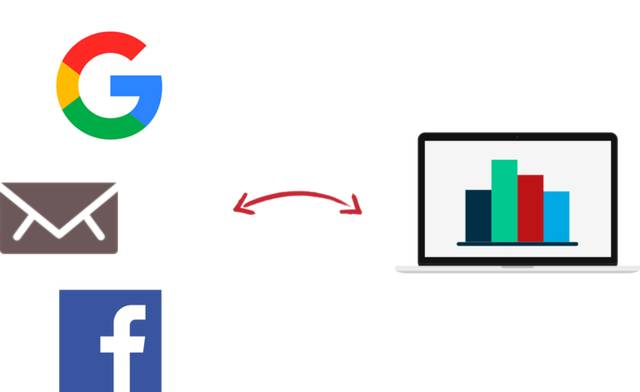
In part one, we talked about how important it is to measure your conversion rate versus how important it is to measure your conversions. The conclusion was briefly that it is more important to know how many conversions you have than to be obsessed with your conversion rate.
But despite that, we constantly get the question of what conversion rate one should have. And then we answer "it depends…." Yes, but WHAT does it depend on then?
Let's try to find out what factors actually affect your conversion rate.
The first thing you should think about when comparing your conversion rate with others' conversion rates is that the standard setup for Google Analytics defines conversion rate as "number of sessions/visits that achieved the conversion goal." So if you compare yourself with others, this is probably the metric you are using.

The problem is that what is actually a more relevant metric is "number of visitors/users who achieved the conversion goal." It is actually people who buy from you - not sessions or devices. How many people have done what you want them to do is a much more relevant metric than how many sessions you have managed to convert.
Conclusion: if you compare yourself with others – make sure to find out if you are talking about conversion of the number of sessions or the number of users.
It is actually people who buy from you - not sessions or devices.
So now that we know we are measuring correctly and comparably, we are ready to look at the different factors that affect the conversion rate.
The first factor that affects your conversion rate is what traffic you send to your site and what the source of that traffic is.
From some traffic sources, you get many visitors but few who convert. From others, you get few visitors but with a very high conversion rate.
Your final conversion rate depends on what traffic mix you have. Therefore, it is also important that you do not just stare at what conversion rate you have, but rather think about the number of conversions (we wrote about this in the first part of this series)

Paid traffic from Google often has a high conversion rate, but it is due to what is called "last click attribution." Often, customers have visited your site several times, and when they are ready to buy, they click on the first thing that comes up on Google, which (surprise!) is your paid ad.
Those who come directly to your site often have a high conversion rate. These are the people who know you best and know the address to your site. Therefore, they are often closer to making a purchase.
Social media often has a lower conversion rate than average. Most people are not on social media to "buy" but to "browse" or to kill some time. This does not mean that social media is unimportant in the buying process. Social media works well to raise awareness and curiosity early in the buying process. But the conversion often comes later, and perhaps through another medium.
Which page you land your visitors on also impacts the conversion rate. We usually say that the landing page's job is to keep the promise that the ad gave. The better you are at capturing and understanding the visitor's intention, the better the result
The better you are at capturing and understanding the visitor's intention, the better the result.
Therefore, traffic that lands on the homepage often has a lower conversion rate. The homepage is the page where you try to meet ALL your visitors' needs. Therefore, it becomes okay for everyone but not super good for any specific target group.
So the more specialized and targeted landing pages you can create – the better. If you have an e-commerce site, you will usually see that the traffic that lands on category and product pages has a higher conversion rate than the traffic that lands on the homepage.
Which device your visitors use has a significant impact on your conversion rate. Generally, mobile traffic has a lower, often much lower, conversion rate than desktop. So if you have a lot of mobile traffic, you will get a lower conversion rate.
But wait, does this really hold true – there's a catch here.

Some recent examples show that sites aimed at a younger audience with a lot of mobile usage have a much smaller difference, maybe none. Younger audiences use their mobile as their "computer" - it's where they do everything: snap, share, shop.
Here you have to realize that it is the person behind the screen who converts, not the screen. As more people become more accustomed to "you can do everything on mobile," it is likely that the difference between mobile traffic and desktop will decrease (and maybe disappear completely?!)
Different e-commerce categories have different conversion rates. It's that simple.
Fashion, for example, often has quite low conversion rates because many visitors have a relatively low intention to buy. They see something nice on Instagram, browse around a bit for similar items on some of their favorite sites. Maybe they buy, maybe they don't.
And if they checked out about five sites to buy one thing, to begin with, 4 out of those 5 won't get a conversion. More comparisons = lower conversion rate.
At the other end of the scale, we have sites that sell things like ink cartridges and similar "boring stuff" that people just have to buy. A common behavior is to Google something like "HP black ink no 57," then click on the first result, go directly to the product page, add to cart, check out – done! As a result, sites of this type are the only ones that can boast double-digit conversion rates.
Today, almost no one can sell anything online if they are completely off in terms of price. But you can choose to always be the cheapest or to be in the middle of the market. If you choose to always be the price leader, your conversion rate will go up. But you will, of course, lose margin.
We've said it before, and we'll say it again. A slow site kills conversion. There are now a plethora of studies showing that every millisecond of delay causes visitors to click away and leave (to the worst competitor?!)
A slow site kills conversion.
So: Fast site = higher conversion rate
Here you can check if your site is fast enough.
This is a bit of a mindf*ck for me because I have spent my entire career at Conversionista trying to get companies to listen more to us, more to their visitors, more to their data, and less to fluffy brand strategists (or "the business prevention unit," as we jokingly call them).
BUT.
Here we must admit that few things affect conversion as much as the perception of your brand.
If the customer knows you and your services and trusts you - yes, then a lot is already checked off when they come to the site. Therefore, a newly started small e-commerce site always has it harder even if they sell exactly the same things at the same price as their competitor who has been in the game for a while.
Crazy, right – how high your conversion rate will be is determined long before the customer comes to the site!
We hardly want to comment on this because everyone measures so differently (and many measure incorrectly), but if we were to talk to a broad selection of Sweden's e-retailers, they would probably say that their conversion rate is between 1-3%. (Given that you measure at the session/visit level and not at the user level)
So check the factors above. If your e-commerce has many of the factors that give a higher conversion rate - then you should have 3% or more. If you have many of the factors that lower the conversion rate, then unfortunately you will have to settle for 1% or less.
Feel free to get in touch if you have comments, think we have reasoned incorrectly, or want to add a factor.
Do you want to learn more about conversion? Check out Conversionista's event Conversion Jam - Scandinavia's largest conversion event!